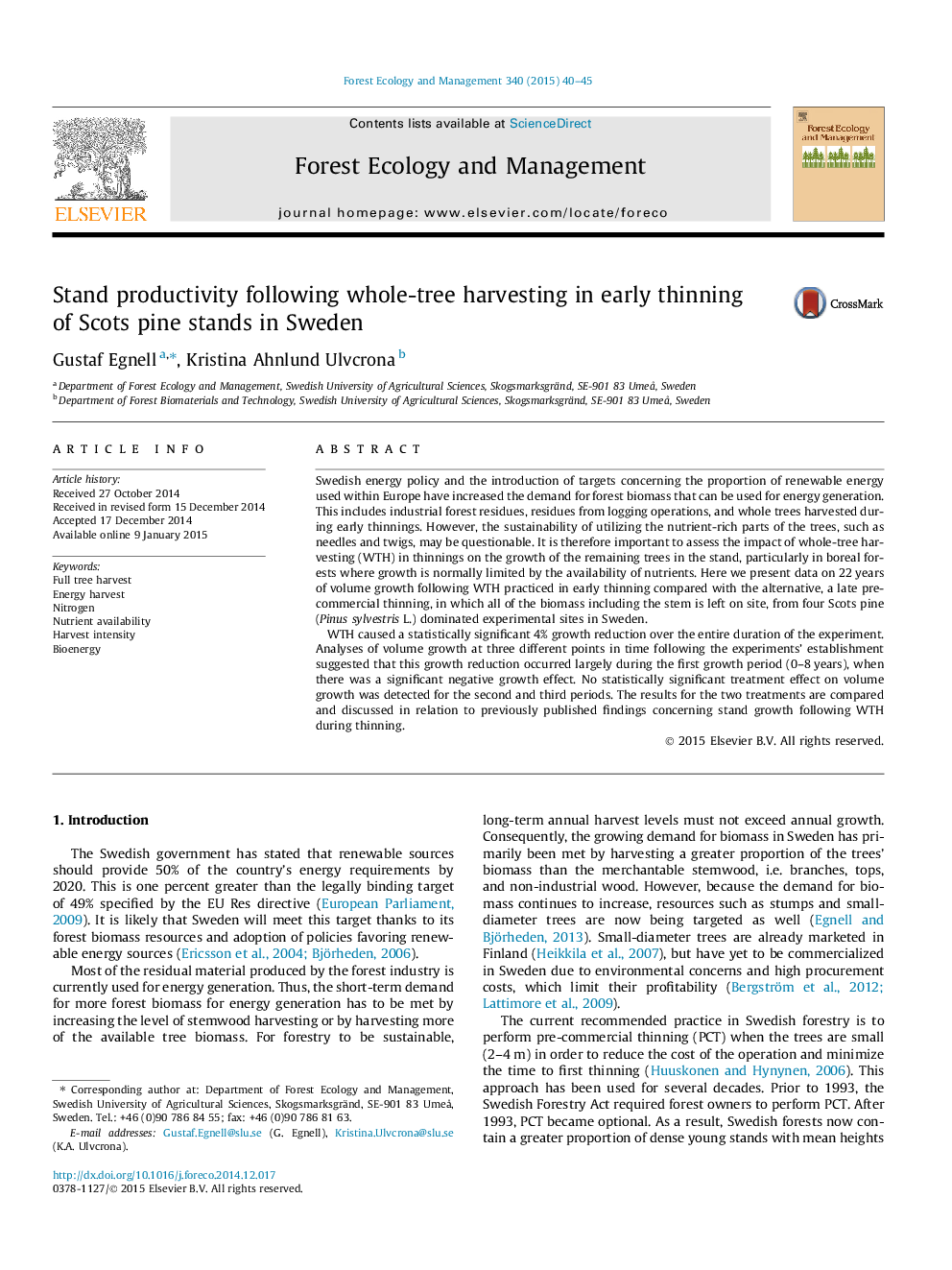| Article ID | Journal | Published Year | Pages | File Type |
|---|---|---|---|---|
| 86340 | Forest Ecology and Management | 2015 | 6 Pages |
•We compared stand growth after whole-tree harvest (WTH) and pre-com. thinning (PCT).•WTH decreased stand growth compared to PCT, where all tree biomass was left on site.•The growth response was manifested during the first growth period (0–8 years).•Thereafter no difference in growth between treatments could be detected.
Swedish energy policy and the introduction of targets concerning the proportion of renewable energy used within Europe have increased the demand for forest biomass that can be used for energy generation. This includes industrial forest residues, residues from logging operations, and whole trees harvested during early thinnings. However, the sustainability of utilizing the nutrient-rich parts of the trees, such as needles and twigs, may be questionable. It is therefore important to assess the impact of whole-tree harvesting (WTH) in thinnings on the growth of the remaining trees in the stand, particularly in boreal forests where growth is normally limited by the availability of nutrients. Here we present data on 22 years of volume growth following WTH practiced in early thinning compared with the alternative, a late pre-commercial thinning, in which all of the biomass including the stem is left on site, from four Scots pine (Pinus sylvestris L.) dominated experimental sites in Sweden.WTH caused a statistically significant 4% growth reduction over the entire duration of the experiment. Analyses of volume growth at three different points in time following the experiments’ establishment suggested that this growth reduction occurred largely during the first growth period (0–8 years), when there was a significant negative growth effect. No statistically significant treatment effect on volume growth was detected for the second and third periods. The results for the two treatments are compared and discussed in relation to previously published findings concerning stand growth following WTH during thinning.
